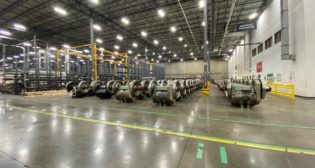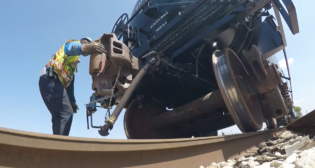
Tank cars drive 1Q railcar market
Written by Douglas John BowenFigures released Wednesday by the Railway Supply Institute's American Railway Car Institute (ARCI) Committee show 23,901 cars were ordered in the first quarter of 2013, while 11,952 cars were delivered, with a backlog of 71,704 cars, all up from the fourth quarter of 2012.
On a year-over-year basis, first-quarter orders (23,091) were up almost 92% from comparable deliveries (12,473) in the first quarter of 2012, ARCI figures show. First-quarter deliveries (11,952) by contrast, declined about 29% from the 16,816 cars delivered in 1Q12.
In a note to clients Wednesday, KeyBanc Capital Markets analysts Steve Barger and Tejas Patel said, “Tank cars continued to dominate as they accounted for 19,267, or 81% of the total orders in the quarter, and non-intermodal flatcar orders in the quarter amounted to 2,003, or 8% of the total. Together, these two car types accounted for 89% of the total orders in the quarter.
“Specific to tank cars, the orders of 19,267 is highest number since ARCI started to provide data by car type in 1Q07, and it exceeded the recent peak of 16,318 in 1Q11,” the KeyBanc analysts observed. “Over the past nine quarters, tank car orders have averaged 9,795 per quarter vs. non-tank average of 9,030. For context, tank cars account for roughly 20% of the industry wide fleet of railcars, while non-tank cars account for 80%.”
The KeyBanc analysts stressed “activity remains characterized by an extreme weighting toward tank cars, which we think is reflective of both the explosive growth in shale oil production and the generally weak volume environment for other commodity types.”
As well, “Tank car backlog continued to expand due to strong orders and industry capacity constraints with respect to deliveries. Based on current production run rates of approximately 24,400 per year, we estimate the industry has 2.5 years of tank backlog visibility, suggesting the OEMs are quoting delivery times into 2015,” KeyBanc said. “The non-tank backlog, however, stands at 10,411, which at current production run rates is less than two quarters of production visibility, although from a total capacity standpoint, it is less than one quarter’s worth of production (4Q11-1Q12 non-tank production averaged 13,550 per quarter).”



